Republic of the Philippines - Stamps and Postal History
Philippine Philatelic Library
|
Republic of the Philippines
|
The following is an
article originally published in The Philippines Postal Journal, Vol. 1
No. 1, September 1970.
The Stamp and Philatelic Division and Its Role in
the Postal Service
By virtue of Executive Order No. 94, dated October 4, 1947 the Stamp and Philatelic Division of the Bureau of Posts was formally organized and on October 16, 1947, it began functioning with a handful of employees. To this newly created branch
of the postal service was given a three-fold task: 1) To take charge of
printing postage and commemorative stamps 2) To effect the
distribution of these stamps to all post offices in the country 3) To promote philately
or stamp collecting (a very enjoyable and fascinating hobby that
enhances learning and keeps both the old and the young busy, thus
lessening the chances for mischief).
The first phase of the work requires technical skill and ingenuity in
the arts to gain popular satisfaction; the second demands a rigid
systematization in routinary procedures to effect prompt delivery of
stamps for public consumption; and the third needs ardor and eloquence
in dealing with the public to promote philately.
The Stamp and Philatelic Division is headed by the Postal Fiscal Service
Chief, who is directly responsible to the Postmaster General in the
accomplishment of all its functions. Aiding the Postal Fiscal Service
Chief is the Assistant Postal Fiscal Service Chief who is directly
responsible to the former.
The Division is composed of eight sections, each headed by a section
chief. Each of these sections has its own particular duties to perform,
but all of them function in full coordination with one another to
maintain an efficient postal service.
The printing and the issuance of postage stamps and commemoratives get
the first attention of the division. The work is not as simple as the
public may presume. It requires time, effort and capital.
The Stamp and Philatelic Division, with the approval of the Postmaster
General, decides what stamps to issue and what designs to portray for
particular occasions. Mostly these are commemoratives. Regular and
special stamps, however, are issued at intervals. After the designs are
approved by the Postmaster General, particulars are prepared for public
bidding among qualified printers. The lowest complying bidder is awarded
the printing job. It takes almost a year to finish the printing, that is
if the proofs submitted are readily approved. Otherwise another proof
has to be submitted and printing is further delayed.
The delivery of the finished stamps is made as stipulated in the
contract. They are delivered to the Stamp Vault Committee chairmanned by
the Division Chief, which takes the role of custodian of the entire
stamp stock of the Bureau of Posts.
The distribution of stamps to all post offices throughout the country,
numbering around 1,500, is done by the Stamp Depository and Issuing
Section headed, by a supply officer III. Requisitions coming from all
city and town postmasters are readily acted upon and the stamps are
mailed to them, carefully packed.
At times postage stamps are locally printed, overprinted, or surcharged
in the Bureau of Printing. These are first submitted to the Revision
Section for revision. The good stamps are delivered back to the Stamp
Depository and Issuing Section for circulation while the damaged ones
are destroyed by a Committee formed for this particular duty.
Worthy of mention in the Stamp and Philatelic Division is the Stamp
Tellers Section headed by a supervising postal teller. These tellers who
directly transact business with the public are very much exposed to
complaints, much less, to ridicule. But it is through them that postage
stamps are sold to city patrons. Their daily sales amount to more or
less P35,000.00.
Most significant among the functions of the Stamp and Philatelic
Division is the promotion of philately or stamp collecting. It may be
interesting to know the circumstances behind the creation of the Stamp
and Philatelic Division.
Before the advent of the Second World War, there had already been
persistent clamors among local stamp collectors for the creation of a
division in the Bureau of Posts to take charge of the sale of
philatelic stamps, particularly commemorative issues. This ardent
desire was further abetted by the economic crisis brought about by the
Japanese occupation of the Islands when, in their financial
difficulties, some hard-up collectors had to sell portions of their
precious collections to keep body and soul together. Eventually, while
more philatelists came into being, individual collections dwindled and
these must be replenished.
Through the efforts of these pioneers in the philatelic field, among
whom were assemblymen and successful businessmen, the long-sought-for
Executive Order was issued and the Stamp and Philatelic Division was
finally created. Thus, proceeds from regular sales of Philippines stamps
began to swell. This was further promoted by the Division's publication
of the now defunct Philippine Journal of Philately which not only
increased to a hundred fold the number of
local philatelists, through the organization of stamp clubs
throughout the country, but also caused foreign stamp collectors to send
their regular orders for Philippine stamps. Their names are now
permanent in the mailing list of foreign philatelists as regular patrons
of Philippine philatelic stamps.
At this time, with four philatelic tellers serving from 8 a.m. to 5
p.m., Monday through Friday, the sale of philatelic stamps remains
brisk, averaging around P4,000.00 daily. This amount rises whenever new
stamps are issued.
Local and foreign philatelists crowding at the tellers' windows, buying
philatelic stamps which they have to add to their ever growing
collections, are a daily sight very inspiring to beginners.
The philatelic counter,
shown above, is located inside the Stamps and Philatelic Division.
Manned by four philatelic stamp tellers, it caters exclusively to stamp
collectors and does not sell stamps for postage purposes. Access to this
counter is through Door 203 of the Post Office Building at Plaza Lawton,
Manila.
To those amateur stamp collectors, the Division always gives its full
attention and service. All their queries are answered to their
satisfaction; they are given pointers on how to begin the bobby; they
are supplied with all necessary philatelic guides, like lists of stamps
still available, lists of stamps issued since 1946, and stamp bulletins
on forthcoming issues. Once oriented, these enthusiastic beginners
start mounting their stamps in albums with all the eagerness of school
children and very soon, they are seen frequenting the philatelic
counters just like old philatelists.
To keep these young and old philatelists ever animated in their hobby,
the Division coordinates with stamp clubs in the holding of annual stamp
exhibitions where prizes for the best entries in different categories
are at stake. These beautiful exhibits, besides promoting philately and
entertaining visitors or casual viewers, further boost the sale of
Philippine stamps.
Provincial stamp collectors and other local or foreign philatelists who
cannot come personally to make their orders for first day covers are not
at all forgotten. They are served thru the mails.
Weeks before the designated date for the issuance of a stamp, stamp
news and bulletins are issued by the Research and Statistical Section
and mailed to them to give them ample time to mail their orders. Local
mail orders up to 10 first day covers are filled without any service
charge if sent before the date of cancellation. Mail orders from foreign
collectors are filled on the first-come first-served basis.
One big regret of the Division, however, is the lack of space in the
building where the proposed Philatelic Library can be accommodated. No
library is as yet available to the public. Hence, philatelic stamps,
particularly those beautiful ones issued by countries that compose the
Universal Postal Union, cannot be viewed by the public. However,
philatelists may read or refer to philatelic materials upon request.
This Division gives its grateful acknowledgment to Department of Public
Works and Communications Secretary, Manuel B. Syquio for having
approved its pet project: the preparation of stamp souvenir folders for
sale to stamp collectors. Phases I and II of the project have already been finished and others are now under preparation. Now on sale in the Philatelic counters are: 1) Souvenir stamp folders affixed with assorted, colorful stamps. 2) Souvenir stamp
folders affixed with complete sets of choice stamps 3) Souvenir stamp
folders containing complete sets of stamps issued yearly from 1966 to
1969 (to be continued from year to year).
From the initial phase of the project the Division has derived an
additional income of P8,548.10 and from the second, P7,810.00. The sale
is going on. Meanwhile other souvenir folders are being prepared.
|
WEB CONTENTS:
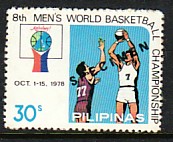 Specimen Stamps 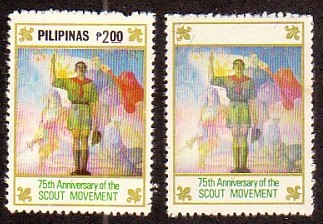 Errors, Freaks & Oddities (EFOs) 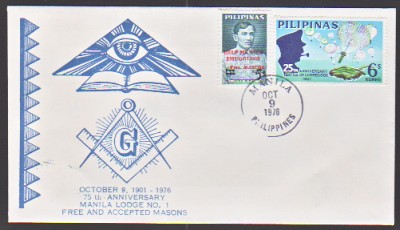 Topical/Thematic 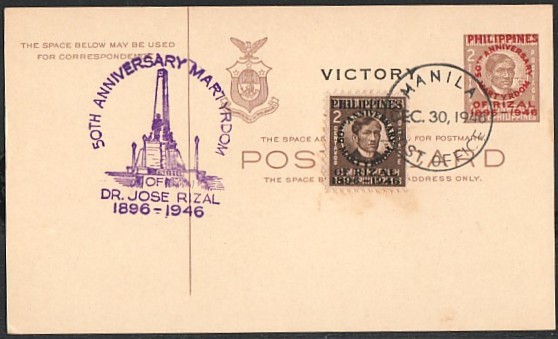 Postal Stationery  Flight Covers  Postal History 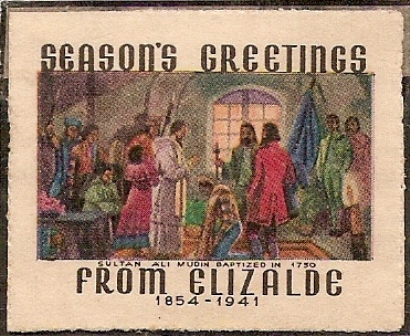 Christmas Seals
|